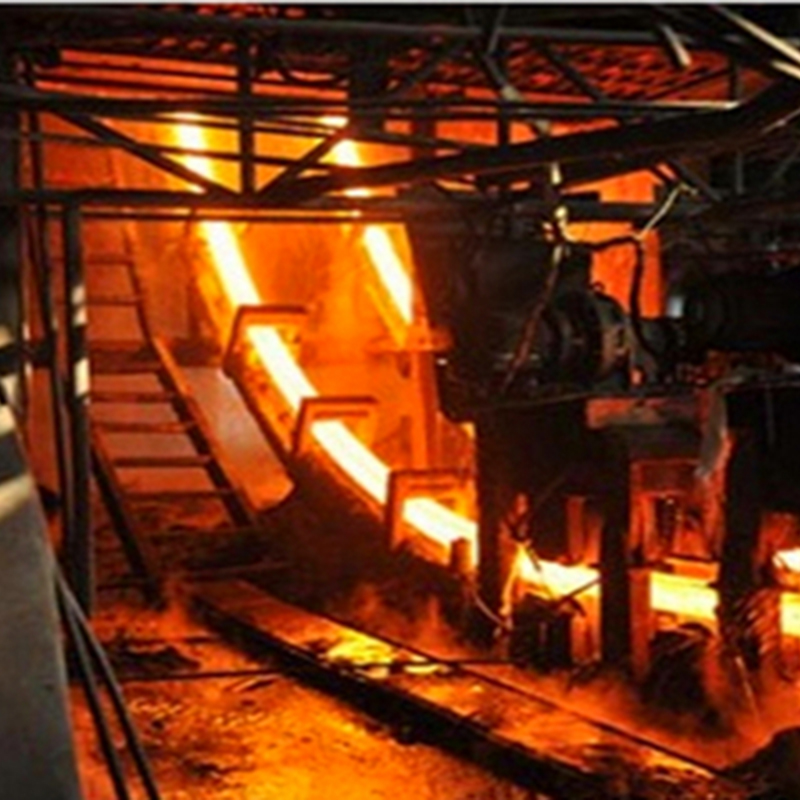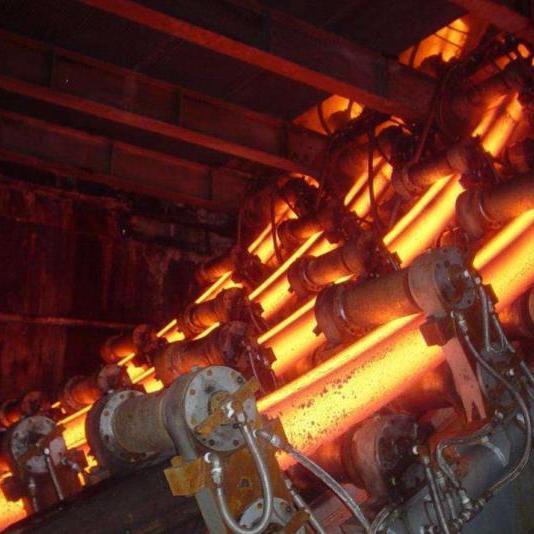Definition of continuous casting and rolling: the high-temperature defect-free billets produced by the continuous casting machine do not need to be cleaned and reheated (but need to undergo short-term soaking and heat preservation treatment) and are directly rolled into products, so that the “cast” The process of “rolling” directly into a production line is called continuous casting and rolling.
1. The method of compact connection between continuous casting and continuous rolling: hot charging and direct rolling of continuous casting billets. The continuous casting billet hot charging process refers to the method in which the billet produced by the continuous casting machine is not cooled, but is heated in a heating furnace in a hot state, and then rolled. The continuous casting billet direct rolling process means that the high-temperature billet from the casting machine is directly sent to the rolling mill to be rolled into products without heating or only slightly supplementary heating of the edges.
2. Advantages of continuous casting and rolling: 1) Simplified production process and short production cycle; 2) Less floor space; 3) Less investment in fixed assets; 4) High metal yield; 5) Good steel performance; 6 ) Less energy consumption; 7) The factory staff capacity is greatly reduced; 8) The labor conditions are good, and it is easy to realize automation.
3. Limiting factors for increasing the drawing speed: 1) Limitation of drawing force; 2) Influence of slab section; 3) Influence of slab thickness; 4) Limitation of mold thermal conductivity; 5) Influence of speed on cast quality; 6) Influence of molten steel superheat; 7) Influence of steel grade.
4. The secondary cooling zone includes: foot roller section, support guide section and sector section.
Cooling methods in the second cooling zone: 1) dry cooling; 2) water spray cooling; 3) water-air spray cooling (the best effect).
5. Inverted taper: In order to reduce the air gap and accelerate the heat transfer of molten steel and the growth of the billet shell, the lower section of the mold is usually smaller than the upper section. If the reverse taper is too small, it will cause the blank shell to break away from the copper wall prematurely, resulting in an air gap, which will reduce the cooling effect, or cause the thickness of the mold shell to be insufficient to cause a leakage accident; The extrusion force is too large to accelerate the wear of the copper wall.
6. The mold meets the requirements: 1) Simple structure and light weight; 2) Good thermal conductivity and water cooling conditions; 3) It should be reciprocated up and down and lubricated; 4) The mold has enough rigidity to avoid affecting the quality of the casting billet.
7. Mold vibration mode: synchronous, negative slip, sinusoidal vibration
8. Crystallizer width adjustment method:
1) The shutdown becomes wider;
2) Translate to widen;
3) Rotate and translate to widen (the most representative).
9. The basic shape of the vertical roller of the vertical edger:
1) Flat roller;
2) Conical roller;
3) Hole roller with flat or convex bottom surface;
4) Hole roll with chute bottom surface.
10. Special roll shape method in rolling width adjustment:
1) Widening of scallop rolls;
2) Widening of rolls with staggered roll rings;
3) Widening of the rolls with the protruding block in the middle;
4) Widening of rolls with variable annular protrusions, widening of tapered rolls;
5) Widening the roller with large crown;
6) The tapered roller is widened.
11. Short hammer head width adjustment press is divided into:
1) Start-stop type width adjustment press;
2) Continuous width adjustment press;
3) Shaking type width adjustment press.
Post time: Sep-06-2022


